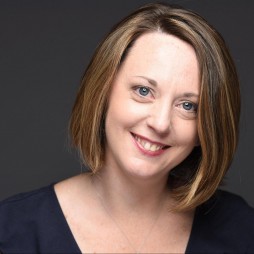
You’ve worked hard on your research, spent time writing it up, and finally, the good news comes: The journal you submitted to has accepted your paper. Trouble is, for multiple authors, that good news turns bad — the acceptance was fake. Recently, in Scholarly Kitchen, Angela Cochran, Associate Publisher, American Society of Civil Engineers (ASCE), revealed a disturbing new trend in predatory publishing: Intermediaries who promise to help researchers get their findings published, but instead pocket the fees. We spoke with Cochran about her experience with this new type of forgery, and how she thinks publishers (and authors) can fight back.
Retraction Watch: It seems like a fairly elaborate ruse to get someone to believe a journal has accepted their paper when it hasn’t. How do you suspect the process works?
Angela Cochran: I don’t know how complicated it needs to be, really. I suspect that a fraudulent intermediary is somehow advertising their services to authors that typically have trouble either navigating the system or getting papers past peer review. In the earliest case we discovered, the duped author sent us a picture of a postcard on his department bulletin board offering help to get published in three journals in the same subject area. Another author told us of a more personal connection. This author encountered someone who said they were a friend of the journal editor. Most recently, we received three fraudulent acceptance letters with at least one author on each paper coming from the same Iranian university.
The intermediary is charging a fee or telling the authors that we charge submission and paper publication fees. We do not charge either. In at least one case, the authors were even given fake reviewer comments. The authors then receive an acceptance letter and eventually contact us to ask when the paper will publish or why it did not appear in the promised issue of the journal.
RW: Of the seven authors you know have been duped, two were based in Iran, and five in China. You present a dilemma: Should you alert their institutions about what happened? Can you say more about why you think you should (or should not) do so?
AC: We’ve received an 8th letter since my Scholarly Kitchen post on the subject. Alerting the institutions can be tricky. When we ask the authors for more information, they usually go silent. I assume that they are either embarrassed or worried that they will be in trouble. Until recently, we did not see a pattern. However, we received a third letter from Iran and one institution is the same on all three. We intend to notify the university as clearly someone is taking advantage of researchers in that particular institution.
RW: In one instance, you were able to track the forgery to an editing service based in China. How did you do that, and do you have any plans to act on the information?
AC: In that case, the author had provided us with some email correspondence. I Googled the email address and it was linked to a service. I checked the website, which was not in English, to see if I could find any mention of our journals. Many of these sites, whether in China, Russia, or the Ukraine, will actually post journal covers and invite authors to submit to those journals. I was unable to find any mention of ASCE journals on the Chinese web site. Without a case for false representation, I am not sure there is anything a publisher can do. I suppose the editor whose forged signature appears on acceptance letters could file some sort of complaint, but that would likely be a waste of time.
RW: Since you shared your experience with fake acceptance letters, have other publishers come forward to share similar stories? How many incidents do you know of now?
AC: In response to my Scholarly Kitchen post, several publishers commented that they have seen fraudulent acceptance letters. Anecdotally, the numbers seem low, but I suspect there are far more out there than we know. Publishers only find out about these fraudulent letters if the author contacts us.
RW: You write: “These phony services damage the reputation of legitimate language editing services and freelance editors in the same way that predatory journals take a bite out of responsible journals.” Can you say more about that?
AC: There are many legitimate services that help authors with language editing, manuscript format, and even finding an appropriate journal for works. Fraudulent services that don’t deliver on what they have promised could make authors from developing countries leery of legitimate services that may actually help them.
RW: You suggest making changes to author guidelines so authors are less likely to get duped. Can you explain some of the changes, and how they might help prevent that?
AC: I think if publishers are more explicit about what will happen during the submission and peer review process, authors will have a better understanding of when promises are too good to be true. For example, if the author guidelines make clear where emails to the author will come from (such as a submission system), what the manuscript number will look like, how long a typical process takes, whether papers are ever accepted without changes, and what kind of information will be contained in correspondence, they may better identify the fraud. On the flip side, too much information gives the fraudulent services an idea of how to fake the process.
Like Retraction Watch? You can make a tax-deductible contribution to support our growth, follow us on Twitter, like us on Facebook, add us to your RSS reader, sign up for an email every time there’s a new post (look for the “follow” button at the lower right part of your screen), or subscribe to our daily digest. If you find a retraction that’s not in our database, you can let us know here. For comments or feedback, email us at [email protected].